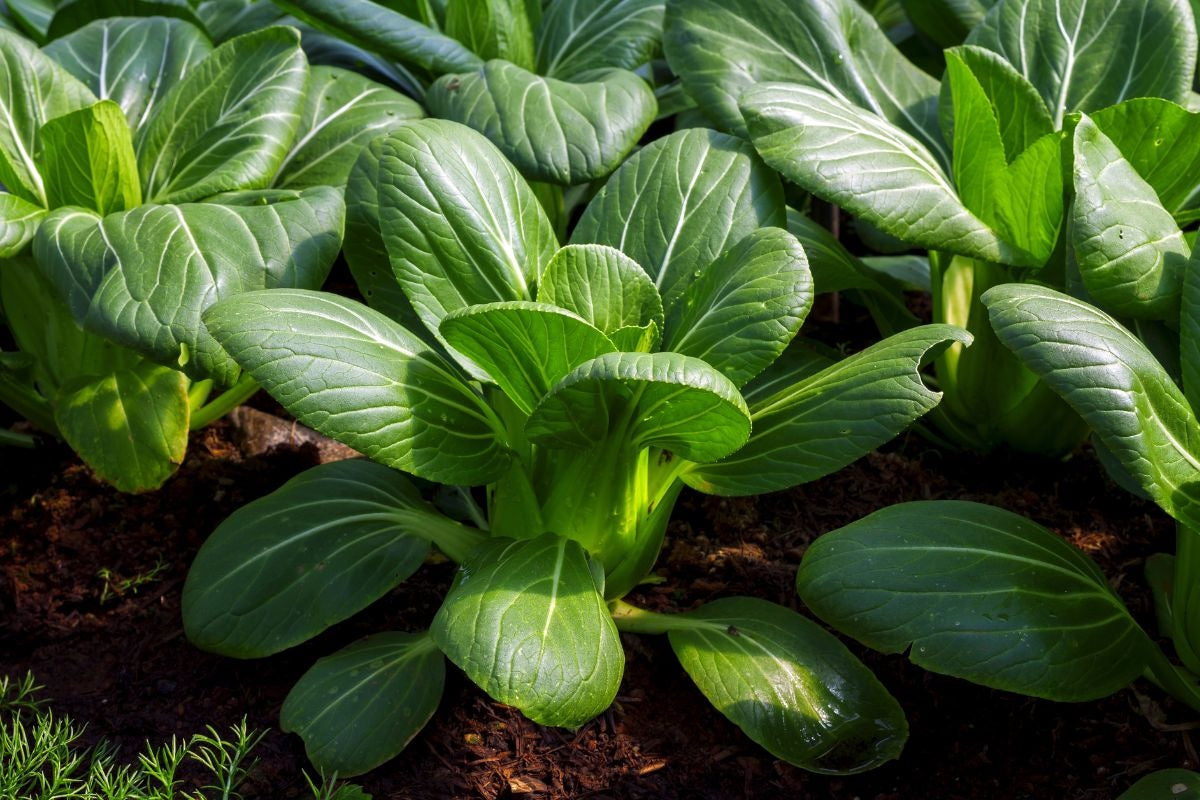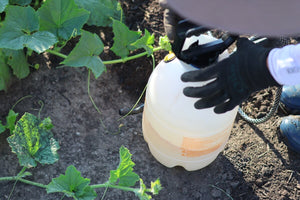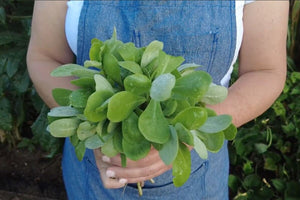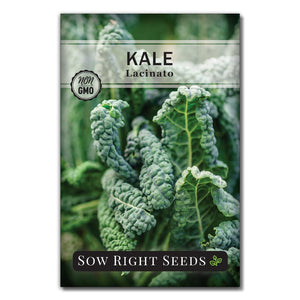How to Plant and Harvest Quick-Growing Bok Choy (Pak Choi)
Leafy greensBok Choy is a tasty Asian cabbage that has been cultivated for centuries and is now grown worldwide. Considered a cool season crop, Bok Choy is well suited for growing in fall gardens in many growing zones. Follow these growing tips from seed to harvest for this nutritious, quick-growing, leafy green vegetable.

Understanding the growth cycle of bok choy/pak choi and why temperature matters will help eliminate the main frustrations.
Bok choy is a biennial plant. Which means it grows those lush green leaves the first year. In the second year, bok choy will flower and go to seed. The problem for gardeners comes when bok choy thinks it has gone through a whole year when it hasn’t. If bok choy goes through a period of cold temperatures followed by warmer temperatures, the plant starts flowering and producing seeds. This is considered premature bolting of the plant. For this reason, it can be tricky to grow bok choy in spring when temperatures can fluctuate wildly.
Knowing your growing zone and paying attention to the weather can help you plan when to plant bok choy for the most successful harvest.
How to Grow Bok Choy from Seed
Bok choy seeds can be planted directly into the ground outdoors or started indoors.
For a spring crop, start bok choy seeds indoors about four weeks before the last spring frost date.
For a fall crop, direct sow seeds in the late summer at least 50 days before the first estimated fall frost date.

Tips for fail-proof bok choy seed germination
Sow seeds ¼” deep.
Soil temp should be 70ºF for germination and then lowered to 60º to 65ºF.
Use bright grow lights close to the seedlings. This will prevent them from becoming spindly as they reach for the light.
Keep soil moist by misting and using a humidity dome.
Once seeds have sprouted, water plants from the bottom to avoid damping off.

Transplanting Bok Choy Seedlings
Transplanting pak choi at the right time will protect the tender seedlings. Pak Choi seedlings should have 3 to 4 true leaves and a developed root system before transplanting outside.
Take time to acclimate the seedlings before transplanting to avoid transplant shock. Harden off the bok choy seedlings and then transplant when the soil temperature is at least 50ºF.
Space bok choy plants 6 to 12 inches apart. If direct sown, thin seedlings as needed. When thinning seedlings, you can cut them off and eat the leaves that are big enough. Cutting, instead of pulling, will keep you from disturbing the roots of the plants you want to keep.

How to Grow Bok Choy Plants
Once your bok choy plants are growing, there are a few simple requirements to follow for a successful harvest.
Sun:
Bok choy needs a minimum of 4 hours of direct light daily. It can grow in partial shade or direct sun as long as it gets at least the minimum of sunlight each day.
Temperature:
Consistent temperatures between 55 and 75ºF are optimal for growing bok choy.
After several nights of temperatures below 50ºF, with a return to warmer temperatures, bok choy will go to seed. Even if only for a few days, the plant will think it went through winter and that it’s time to start its second year.
Watering:
Bok choy also needs consistent water. Keep the soil moist. Usually, an inch of water per week is sufficient. Avoid overhead watering. Drip irrigation and soaker hoses can help keep the soil moist and take water to the roots while keeping the leaves dry.
Weeding:
Weeds can quickly overtake young seedlings. Bok choy roots are relatively shallow and can’t compete with weeds. Before planting, remove all weeds. After planting, you can use mulch to keep in moisture and prevent weeds from sprouting.
Fertilizing:
Nutrient-rich soil is best for growing bok choy. Organic fertilizer can be added when planting or transplanting. Test your soil first to see what ratio of NPK is needed.
Solutions for Pests & Diseases
Bok choy is less susceptible to pests and diseases that afflict other cabbage crops.
The use of companion planting can be helpful to repel flea beetles and aphids. Radishes can be planted far enough away from the bok choy to attract flea beetles. Nasturtiums are a trap crop for aphids.
Use row covers early to keep flea beetles and other insects off seedlings. Natural methods can be used to get rid of aphids, cabbage worms, slugs, and snails.

How to Harvest Bok Choy
Bok choy is edible at all stages, so you don’t have to wait too long to enjoy it. In as little as 30 days, you can harvest individual leaves. When removing individual leaves, remove the outer ones first and leave the inner core to keep growing.
Baby bok choy is extra tender and sweet. These small heads are often eaten raw.
Anytime between 30 and 60 days, you can harvest the whole head by cutting it 2 inches above the soil.
Don’t wait too long to harvest, or the bok choy plants may go to seed. If bok choy starts developing a flower bud, it’s time to cut the whole plant.
Bok choy only stays fresh for a few days in the fridge. Separate and wash the leaves right before using.
Bok Choy FAQs
Is it better to direct sow or transplant bok choy?
Whether to direct sow bok choy seeds or grow them indoors for transplanting will depend on the fluctuations in temperature. If you are planting in a growing zone with little temperature fluctuations for the next eight weeks, then direct sowing will be the simplest way to grow bok choy. However, if temperature fluctuations could make the bok choy bolt prematurely, it will be better to start seeds indoors. Once temperatures are more steady, you can transplant the seedlings outdoors.
Does bok choy grow back after cutting?
Harvesting the outer leaves will leave the core to continue growing. If you cut the whole head off between 1 and 2 inches from the ground, it can regrow if there is enough time left in the growing season.
Which part of bok choy do you eat?
All parts of the bok choy plant above ground are edible.
Does bok choy come back every year?
Bok choy is a biennial, but in the second year, it will only flower and go to seed. So it is grown as an annual.
Bok choy is a healthy and delicious vegetable to grow. Because of its short shelf life, you’ll find it even tastier if you grow it yourself. Add this unique leafy green to your garden.
Written by Beverly Laudie
Found this information helpful? Share it with your gardening friends!






Leave a comment